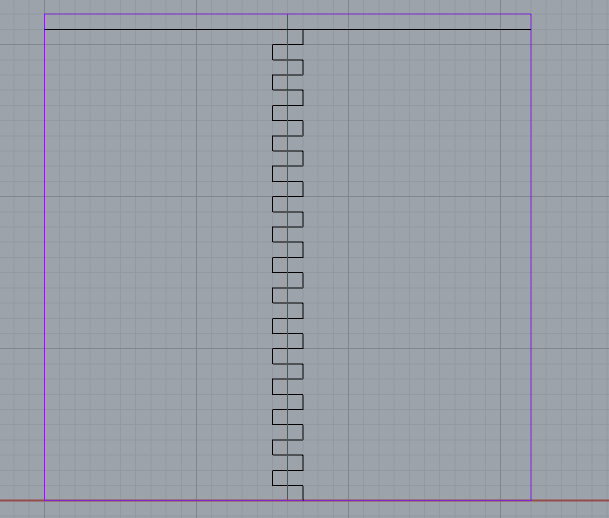We started by measuring the maximum distance the machine could move in the x and y directions. The maximum distance is approximately 11.5 inches along both axes. This gave us the constraints for the board. To be conservative, we decided to go with a board that would span 11 inches by 11 inches. A chess board is 8 spaces by 8 spaces, so we decided to make each space 1.25 inches by 1.25 inches (making the spaces span 10 inches by 10 inches) and leave a half-inch perimeter around the spaces as storage for chess pieces that get "killed." We decided to use masonite as the material for the board. The board design will be scored by the laser cutter into the masonite. The board design can be seen below:

The next consideration was how to place the board above the machine. We decided that it would be cool to have the machine enclosed inside a box so that it would not be seen as the game of chess was being automatically played. However, due to material constraints, we ended up choosing to design only the edges of the box with a flat surface on the top for the board. Using the machine size as a constraint, we decided that the box would be 31 inches by 31 inches by 31 inches. The masonite pieces we had available were 32 inches by 16 inches. So, we decided to design teeth for the pieces of the table to press-fit together. The depth of the teeth were designed to be the width of the masonite. The table design from Rhino can be seen below:

First pass to make the press-fit table surface.

Second pass to score the board onto the surface.
Once the designing was completed, we laser cut all of the pieces. Below are some pictures of the joints:

The corners

The top

A general joint
Still missing: a picture of the final designs on Rhino, a picture of the final constructed table